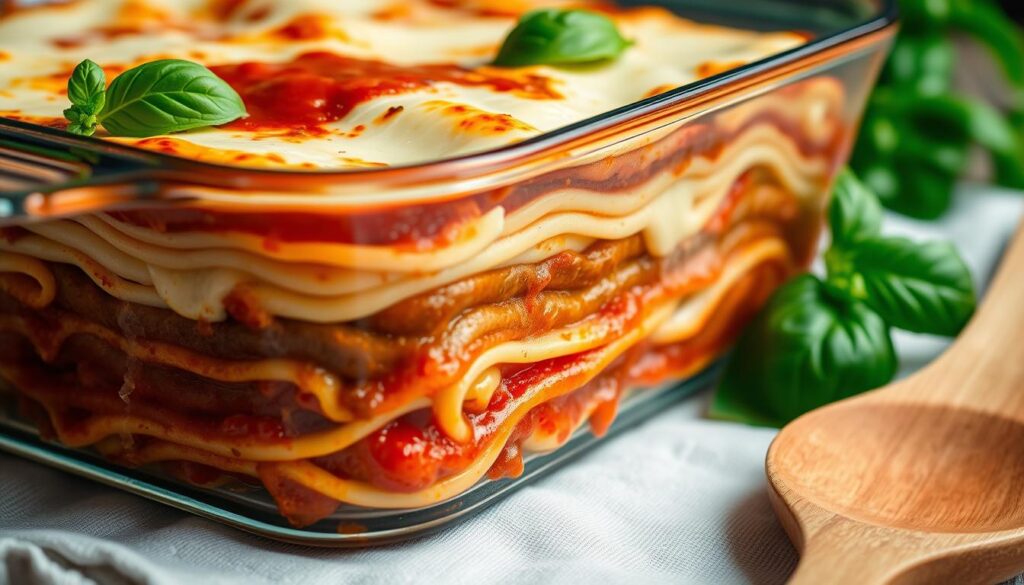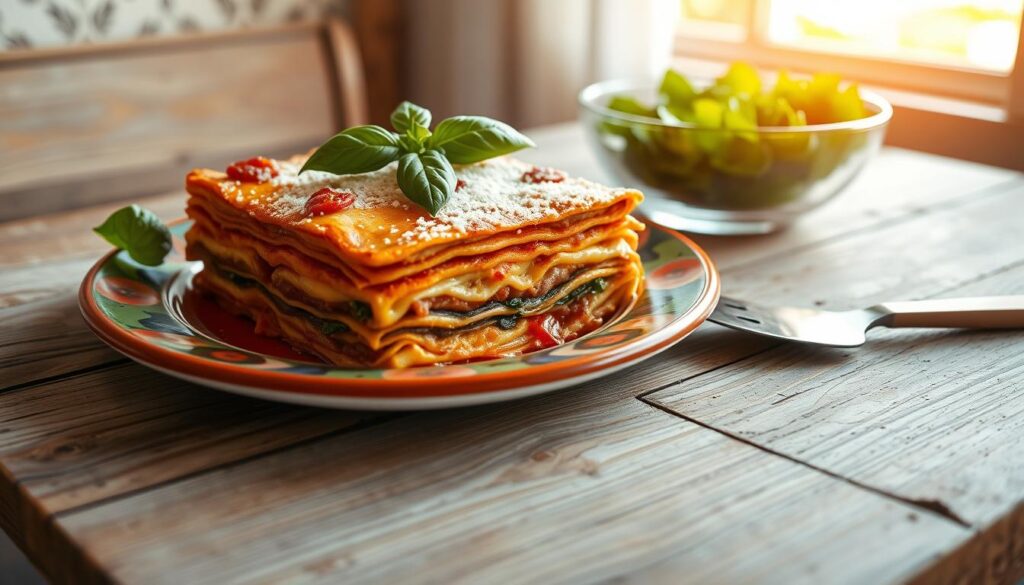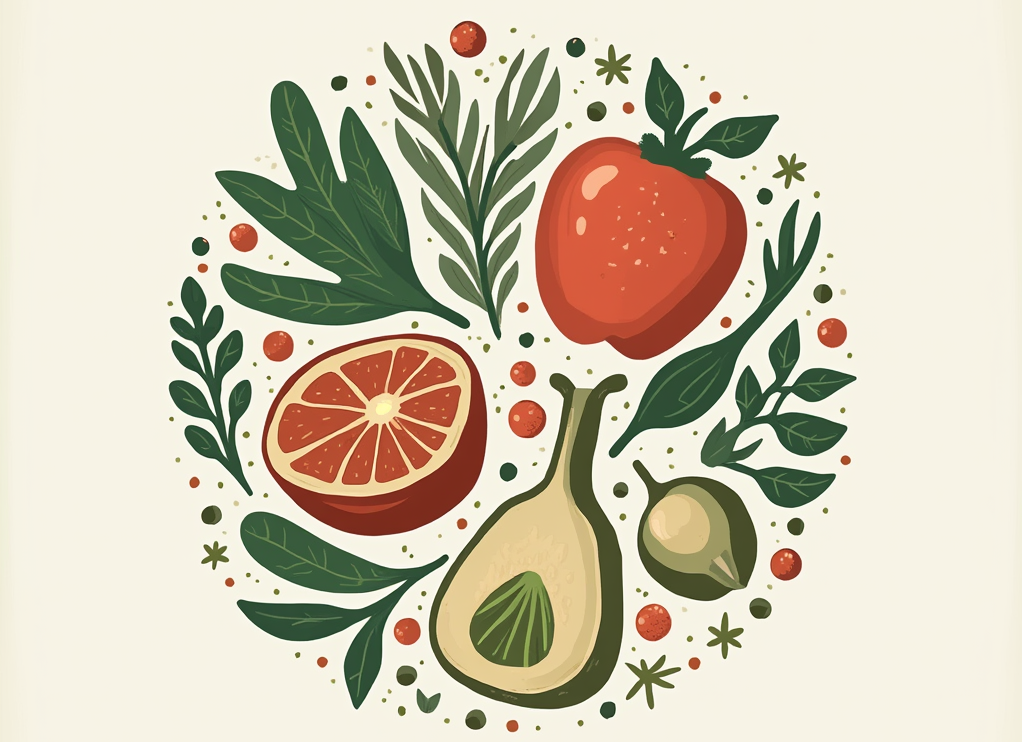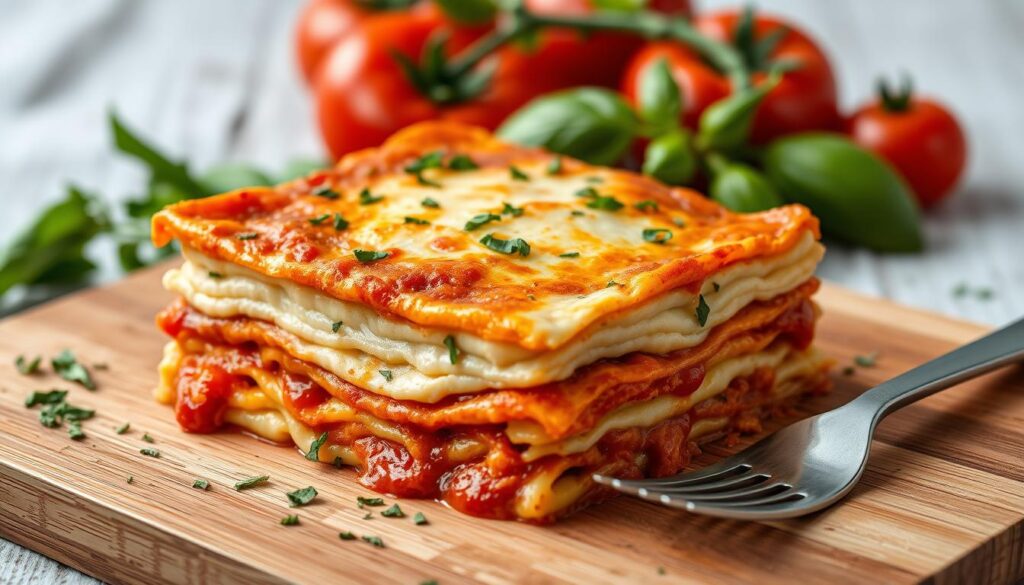Learn how to make a classic lasagna recipe from scratch with this simple, foolproof guide.
Table of Contents
Lasagna is a beloved Italian dish that is perfect for special occasions or everyday meals. This classic lasagna recipe is a staple of Italian cuisine, with its rich flavors and layered texture. In this article, we will guide you through the process of making a delicious lasagna from scratch.
To make a great lasagna, you need to have the right ingredients and equipment. We will provide an overview of the cooking process and the various techniques involved in preparing this iconic Italian cuisine. With our easy step-by-step lasagna recipe, you will be able to create a mouth-watering dish that is sure to impress your family and friends.
Our goal is to provide you with a comprehensive guide to making a classic lasagna recipe that is both easy to follow and delicious to eat. Whether you are a beginner or an experienced cook, our guide will walk you through the process of making a great lasagna recipe that is sure to become a staple of your Italian cuisine repertoire.
The History and Origins of Classic Lasagna
Lasagna, a beloved dish around the world, has a rich history that dates back to ancient Italy. The origins of this iconic layered dish are rooted in the region of Emilia-Romagna, where it was known as “lasanum” or “cooking pot.” Over time, lasagna evolved and spread throughout Italy, with different regions developing their own unique variations of pasta recipes.
As we delve into the history of lasagna, it becomes clear that this dish has been a staple of Italian cuisine for centuries. From its humble beginnings as a simple layered dish to its current status as a global culinary phenomenon, lasagna has undergone a significant transformation. Today, we can find various pasta recipes that showcase the diversity and creativity of Italian cuisine.
- Lasagna Bolognese: a classic version from Emilia-Romagna, featuring ground beef and tomato sauce
- Lasagna alla Napoletana: a Neapolitan version, characterized by the use of fresh tomatoes and mozzarella cheese
- Lasagna al Forno: a baked lasagna from Tuscany, typically made with ground beef and spinach
These regional variations demonstrate the versatility and richness of layered dishes like lasagna, which continue to inspire new pasta recipes and culinary innovations.
| Region | Lasagna Variation | Key Ingredients |
|---|---|---|
| Emilia-Romagna | Lasagna Bolognese | Ground beef, tomato sauce, parmesan cheese |
| Naples | Lasagna alla Napoletana | Fresh tomatoes, mozzarella cheese, basil |
| Tuscany | Lasagna al Forno | Ground beef, spinach, ricotta cheese |
Essential Ingredients for the Perfect Lasagna Recipe
To create a delicious lasagna, it’s crucial to use high-quality ingredients. The foundation of a great lasagna is a rich meat sauce, made with ground beef and a blend of herbs and spices. This sauce is the backbone of the dish, providing a depth of flavor that complements the other ingredients.
In addition to the meat sauce, another essential ingredient is ricotta cheese. This creamy cheese adds a tangy flavor and a smooth texture to the lasagna. When selecting ricotta cheese, look for a high-quality brand that is made with whole milk and has no added preservatives.
Other essential ingredients include mozzarella cheese, parmesan cheese, and fresh basil. These ingredients work together to create a harmonious balance of flavors and textures. Here are some tips for selecting the best ingredients:
- Choose a high-quality meat sauce that is made with lean ground beef and a blend of herbs and spices.
- Select a whole-milk ricotta cheese that is free from added preservatives.
- Use a combination of mozzarella and parmesan cheese for a rich and creamy flavor.
By using these essential ingredients and following some simple tips, you can create a delicious and authentic lasagna that is sure to please even the most discerning palate. With a rich meat sauce and creamy ricotta cheese, your lasagna is sure to be a hit.
Required Kitchen Equipment and Tools
To prepare a delicious lasagna, it’s essential to have the right kitchen equipment and tools. This includes a large skillet for browning the meat, a baking dish for assembling and baking the lasagna, and a cheese grater for grating the cheese. Having these basic tools will make the cooking process more efficient and help you achieve the perfect dish.
When it comes to baking techniques, having the right equipment can make a big difference. A food processor can be useful for chopping vegetables and mixing the cheese mixture, while a stand mixer can help with mixing the meat sauce and other ingredients. These tools can enhance the cooking process and help you achieve better results.
Basic Equipment Needed
- Large skillet
- Baking dish
- Cheese grater
Optional Tools for Enhanced Results
- Food processor
- Stand mixer
By investing in the right kitchen equipment and tools, you’ll be able to master various baking techniques and create delicious dishes, including lasagna. Remember to choose high-quality equipment that will last long and provide you with the best results.
Preparing the Meat Sauce
To create a delicious lasagna, a rich and flavorful meat sauce recipe is essential. This sauce is a fundamental component of Italian cooking, and its preparation requires attention to detail and patience. The key to a great meat sauce is to cook it slowly, allowing the flavors to develop and the textures to meld together.
A good meat sauce recipe typically includes ground beef, tomato sauce, and herbs such as basil and oregano. These ingredients are simmered together for an extended period, usually several hours, to create a thick and savory sauce. The slow cooking process helps to break down the connective tissues in the meat, resulting in a tender and flavorful sauce.
Some tips for preparing a great meat sauce recipe include:
- Using high-quality ingredients, such as fresh herbs and lean ground beef
- Cooking the sauce slowly over low heat to prevent burning or scorching
- Stirring the sauce regularly to ensure even cooking and to prevent the formation of lumps
By following these tips and using a traditional Italian cooking approach, you can create a delicious and authentic meat sauce recipe
In Italian cooking, the meat sauce recipe is a staple of many traditional dishes, including lasagna, spaghetti Bolognese, and meatball subs. By mastering this fundamental sauce, you can create a wide range of delicious and authentic Italian dishes that are sure to please even the most discerning palates.
Making the Perfect Ricotta Cheese Mixture
To create a delicious lasagna, it’s essential to have a well-balanced ricotta cheese mixture, which serves as a key pasta filling. This mixture is what gives lasagna its creamy texture and rich flavor. When selecting ricotta cheese, look for a brand that is high in quality and has a smooth consistency.
When preparing the ricotta cheese mixture, it’s crucial to mix it with other ingredients, such as eggs, parmesan cheese, and herbs, to create a smooth and creamy filling. The seasoning and mixing techniques used can greatly impact the final flavor and texture of the ricotta cheese mixture. A good ricotta cheese mixture should be well-seasoned, with a balance of salt, pepper, and other herbs and spices.
Cheese Selection Tips
- Choose a high-quality ricotta cheese that is fresh and has a smooth consistency.
- Avoid ricotta cheese that is too watery or too dry, as this can affect the texture of the final dish.
- Consider adding other types of cheese, such as parmesan or mozzarella, to the ricotta cheese mixture for added flavor.
Seasoning and Mixing Techniques
To develop the flavors and textures of the ricotta cheese mixture, it’s essential to use the right seasoning and mixing techniques. This can include adding herbs and spices, such as basil or oregano, and mixing the ingredients together until they are well combined. The ricotta cheese mixture should be smooth and creamy, with no lumps or uneven textures.
| Ingredient | Quantity |
|---|---|
| Ricotta cheese | 1 cup |
| Eggs | 2 |
| Parmesan cheese | 1/2 cup |
Layer Assembly Techniques
Assembling the lasagna layers is a critical step in the cooking process. To achieve a balanced and harmonious layer structure, it’s essential to understand the importance of layer assembly. This process involves spreading the meat sauce, layering the pasta, and adding the ricotta cheese mixture in a specific order.
The key to successful layer assembly is to create a uniform structure, ensuring that each lasagna layer is evenly distributed. This can be achieved by starting with a thin layer of meat sauce, followed by a layer of pasta, and then a layer of ricotta cheese mixture. This process is repeated until all the ingredients are used up, finishing with a layer of cheese on top.
Some tips to keep in mind during the layer assembly process include:
- Using a large, flat surface to assemble the lasagna layers
- Applying gentle pressure to prevent the layers from shifting
- Leaving a small border around the edges of the baking dish to prevent the lasagna from overflowing
By following these tips and understanding the importance of layer assembly, you can create a delicious and visually appealing lasagna dish. The layer assembly process is a crucial step in creating a harmonious and balanced lasagna, with each layer working together to create a cohesive and flavorful dish.

Baking Time and Temperature Guide
To achieve a perfectly cooked lasagna, it’s essential to understand the importance of baking time and oven temperature. The ideal baking time will vary depending on the size and thickness of the lasagna, as well as the oven temperature. Generally, a standard-sized lasagna will take around 30-40 minutes to bake at 375°F (190°C).
When it comes to oven temperature, it’s crucial to ensure that the oven is preheated to the correct temperature before baking. A temperature that’s too high can cause the lasagna to burn, while a temperature that’s too low can result in undercooked noodles. The ideal oven temperature for baking lasagna is between 350°F (175°C) and 400°F (200°C).
Proper Oven Settings
To ensure that your lasagna is cooked to perfection, follow these guidelines for proper oven settings:
- Preheat the oven to 375°F (190°C)
- Place the lasagna on the middle rack of the oven
- Bake for 30-40 minutes, or until the cheese is melted and bubbly
Visual Cues for Doneness
In addition to following the recommended baking time, it’s also important to look for visual cues to determine when the lasagna is done. These cues include:
- A golden-brown color on top
- Bubbly cheese and sauce
- Noodles that are cooked through and tender
By following these guidelines and paying attention to visual cues, you’ll be able to achieve a perfectly cooked lasagna with a delicious, golden-brown crust and a tender, flavorful interior.
| Oven Temperature | Baking Time |
|---|---|
| 350°F (175°C) | 35-45 minutes |
| 375°F (190°C) | 30-40 minutes |
| 400°F (200°C) | 20-30 minutes |
Serving and Storage Tips
Once the lasagna is cooked, it’s time to think about serving and storage methods. Proper serving tips can make a big difference in the presentation and enjoyment of the dish. Consider slicing the lasagna into neat, uniform pieces and garnishing with fresh herbs or a sprinkle of parmesan cheese.
When it comes to storage methods, it’s essential to keep the lasagna fresh for as long as possible. Cool the lasagna to room temperature, then refrigerate or freeze it for later use. Some useful serving tips include serving the lasagna with a side of garlic bread or a green salad, or using it as a main course for a special occasion.
Presentation Ideas
- Use a variety of colors and textures to add visual interest to the dish
- Consider adding a sprinkle of red pepper flakes or a drizzle of olive oil for extra flavor
- Use fresh herbs, such as basil or parsley, to add a bright and fresh flavor
Freezing and Reheating Methods
To freeze the lasagna, cool it to room temperature, then wrap it tightly in plastic wrap or aluminum foil. When reheating, use a low oven temperature (around 300°F) to prevent the cheese from melting too quickly. Some useful storage methods include labeling and dating the frozen lasagna, so you can easily keep track of how long it’s been stored.

Conclusion: Mastering Your Homemade Lasagna
As you’ve learned throughout this comprehensive guide, making a delectable homemade lasagna is an art form that can be mastered with the right techniques and ingredients. From understanding the rich history and regional variations to perfecting the essential components like the meat sauce and cheese mixture, you now possess the knowledge and skills to craft a truly authentic Italian lasagna in your own kitchen.
With the step-by-step instructions and practical tips provided, you’ll be able to layer your lasagna with precision, bake it to golden-brown perfection, and serve it with confidence. Whether you’re a seasoned home cook or a beginner in the kitchen, this lasagna recipe will become a go-to favorite that impresses family and friends alike.
So don’t be afraid to get creative and put your own unique spin on this classic dish. Experiment with different meat blends, cheese varieties, and vegetable additions to make it your own. The beauty of homemade lasagna lies in the ability to personalize it to your taste preferences and dietary needs.
Remember, the conclusion of this lasagna recipe summary is just the beginning of your culinary journey. Embrace the process, have fun with it, and savor the delicious rewards of your homemade masterpiece. Buon appetito!



